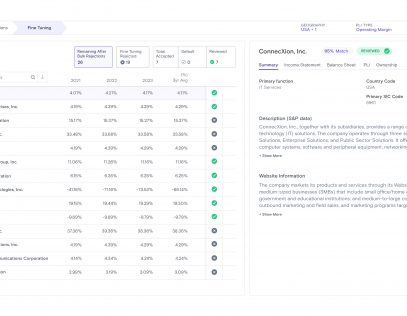Global tax authorities in various jurisdictions might have different compliance requirements, which are important to understand and monitor. Regardless of the jurisdiction, the one thing in common is that the “benchmarking analysis” is the bedrock of transfer pricing compliance. Getting it right is one of the highest priorities for tax professionals when it comes to trying to reduce audit risk.
Given that an inaccurate benchmark analysis is shown to be a key red flag for audit risk, I’d like to share five key factors to ensure you get your benchmarking analysis right.
1. Get the Functional Analysis Right
The benchmarking analysis starts with knowing the role of the tested party. It is imperative to know what functions the tested party is engaged into, what assets its employs, and which are the risk it bears in the overall transaction. Knowing the exact functions of the tested party is the first step in finding the close comparable transactions to benchmark the controlled transactions. An incorrect functional analysis cannot result in an apt benchmarking analysis, which might cause the rejection of the transfer pricing documentation by the tax authorities.
2. Use the Appropriate Database(s) and Jurisdictions
The type of database you employ depends a lot on the type of the transactions you are analysing. It is important to ensure that the database you are using is the right one for the type of transactions being tested. For analysing a royalty transaction, choose a database that has information and contracts related to licensing agreements. Further, its equally important to use the comparables of the same market jurisdictions to the extent possible as they are close to the economic realities of the controlled transactions. For instance, a controlled transaction between two North American entities should not be compared with the uncontrolled transactions of Asia Pacific region as the economic factors and other circumstances of these two jurisdictions are different.
3. Apply Suitable Filters
Quantitative and qualitative filters are important for an ‘apples-to-apples’ comparison and thereby to get an appropriate comparable set. For example, a company with the turnover of US$10 million cannot be compared with a company which clocks US$ 1 billion. Similarly, a contract manufacturer should not be compared with the entity which owns significant intangible properties. These sort of differences can be eliminated through applying filters such as Turnover filter, R&D filters etc.
4. Keep the Trail of the Analysis
Keeping the trail of the analysis performed is of paramount importance considering the subjectivity of the transfer pricing scenarios. The great level of uncertainty makes it more relevant to keep the records such as the process adopted, date of the database used, search strategy, reasons for rejecting and accepting comparables etc. along with applicable screen shots may come in very handy at the time of the audit later on.
5. Avoid “Standard” Benchmarking Sets
Few groups use the standard industry benchmarking sets in their transfer pricing documentation without giving much regards to the scale and the unique attributes of the transactions they are testing. We all know, one size doesn’t fit well in every scenario. The transactional realities of the entities may vary. Hence, a customized benchmarking exercise should be conducted at all times as it appropriately addresses the comparability factors prescribed by the tax authorities.
There are many other elements to consider while doing the benchmarking analysis. The key factors highlighted above should ensure a benchmarking analysis that is reliable, defendable and meets the criteria intended by the provisions enshrined in the transfer pricing regulations.
Benchmarking analysis is rightly considered as the backbone of the transfer pricing compliance as this supports the taxpayer with the reliable economic data in comparing the controlled transaction that is being tested with uncontrolled transactions. Getting the benchmarking analysis right will minimize the risk of a transfer pricing adjustments and will go a long way in ensuring the certainty in tax positions of the overall group.









